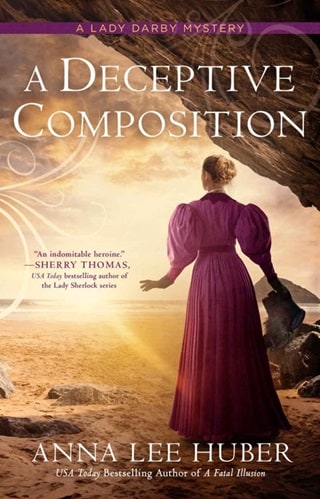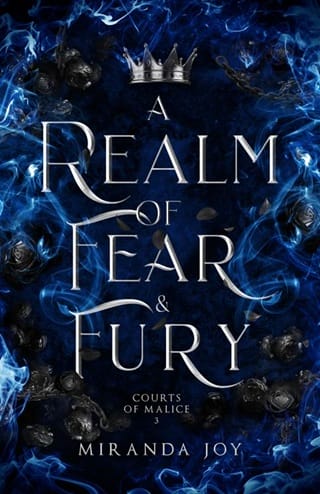Historical Note
As with all my novels, I love to weave interesting historical events, facts, and figures with fictional elements. A Deceptive Composition is no different.
A large part of the novel is set at Roscarrock House, which is based in part on Roscarrock House Farm near Port Isaac in Cornwall. Many of the external details of the house and the landscape surrounding it are taken from reality, but some of the internal construction has been altered to suit my purposes. Most of the coves, points, and villages, as well as St. Endelienta's Church, are also actual sites in the corresponding area.
The strange grouping of trees at Liftondown that Kiera notes is rather famous to those native to the area, or who frequently travel there. They can be seen from the A30 motorway, and for many they indicate that they're on the doorstep of Cornwall. This copse of trees probably did not exist in 1832, but I couldn't resist utilizing it, nonetheless.
Smuggling is rather notoriously linked with Cornwall, and for good reason, though smuggling, in fact, occurred all over the British Isles. By 1832, most free trading had been suppressed by the creation of a new preventive force and by changes to the laws that levied heavier penalties on the act and no longer made it as profitable. The smuggling that did continue was usually done by sending agents to France or elsewhere to purchase contraband and hire ships to sail the goods to the edge of territorial waters, where the goods were either sunk in tubs to be retrieved later or were transferred to smaller fishing boats, which would carry the illicit cargo to shore. Most local smugglers did not become wealthy, but it rather supplemented their low incomes as fishermen, miners, and farmers.
One of the most famous smugglers was John Carter, the "King of Prussia," who operated out of Prussia Cove near Mount's Bay with his brothers. Despite their chosen occupation, they had reputations for being upright, honest men, and they did, indeed, ban coarse talk from their ships.
Wrecking is another practice which is infamously connected to Cornwall, though it also happened all over Britain. While it's true that the Cornish had a reputation for being able to pick a wreck clean with precision and speed, they also risked their lives regularly to save the crew members of floundering ships. The notion that they purposely lured ships to their doom on razor-sharp rocks is more legend than reality. If it ever happened at all, the instances were very few.
One noteworthy wreck occurred on January 19, 1526. A great ship of the King of Portugal called the St. Andrew was driven ashore by a tempest near Gunwalloe. It was rumored to have treasure aboard—all or most of which promptly disappeared. This wreck and the wrangling between the Portuguese, the English government, and the local landowners over who had rights to the treasure inspired the tale weaved by my droll teller, which was my creation.
Droll tellers were much like traveling minstrels, wandering through Cornwall sharing folklore and ballads. Cornish folklore is a rich and absorbing subject. I mention just a few of the more famous myths and tales, as well as their beliefs in wind charms and various other rituals. Witch marks were not exclusive to Cornwall but can be found in old buildings all over Britain.
The red-billed chough native to Cornwall is a fascinating bird. It's easy to see where the notion that King Arthur chose to take the form of one came from. They are beautiful and canny creatures. Mischievous, too.
John Opie was a self-taught artist from Cornwall known as "the Cornish Wonder." He painted mostly portraits and was highly sought after in the late-eighteenth and early-nineteenth century. He was, indeed, lauded by none other than Sir Joshua Reynolds as "a Caravaggio and Velásquez in one." High praise, indeed.
Edward Trelawny is a fascinating figure. Sailor, author, adventurer, friend to Lord Byron and Percy Bysshe Shelley. The list of amusing anecdotes about his life is long, though there is also great debate about how many of them are actually true. But given the fact that he was from Cornwall and that he took part in the War of Greek Independence where Gage possibly could have met him, I couldn't resist including him even in a limited capacity.
One final note about my inclusion of the Cornish specialty stargazy pie. While this is a real dish—one that is said to have originated in Mousehole to commemorate fisherman Tom Bawcock's heroic actions in saving the village from starvation sometime in the sixteenth century—it is not known when precisely the pie came into being. The earliest recorded mention of the recipe that I could locate was printed in a magazine in the 1920s. As such, stargazy pie might not have existed in 1832, but it also feasibly could have. So I decided to serve it up at the Roscarrocks' party.
 Fullepub
Fullepub 



